Arts & Entertainment Community Education
Harbor History Museum’s Shenandoah earns prestigious award; walls come next
The Harbor History Museum’s Shenandoah Restoration Project is riding a wave of momentum, hitting two milestones in recent weeks.
Arts & Entertainment Sponsor
Arts & Entertainment stories are made possible in part by the Gig Harbor Film Festival, a proud sponsor of Gig Harbor Now.
The project won an Award of Excellence from the American Association for State and Local History (AASLH) earlier this summer. The award is considered the most prestigious recognition for achievement in the preservation of state and local history. The Shenandoah was the only Washington state project to earn the award in 2023.
Meanwhile, work began last week to enclose the museum’s Maritime Gallery, where restoration of the historic fishing boat has progressed for over a decade.
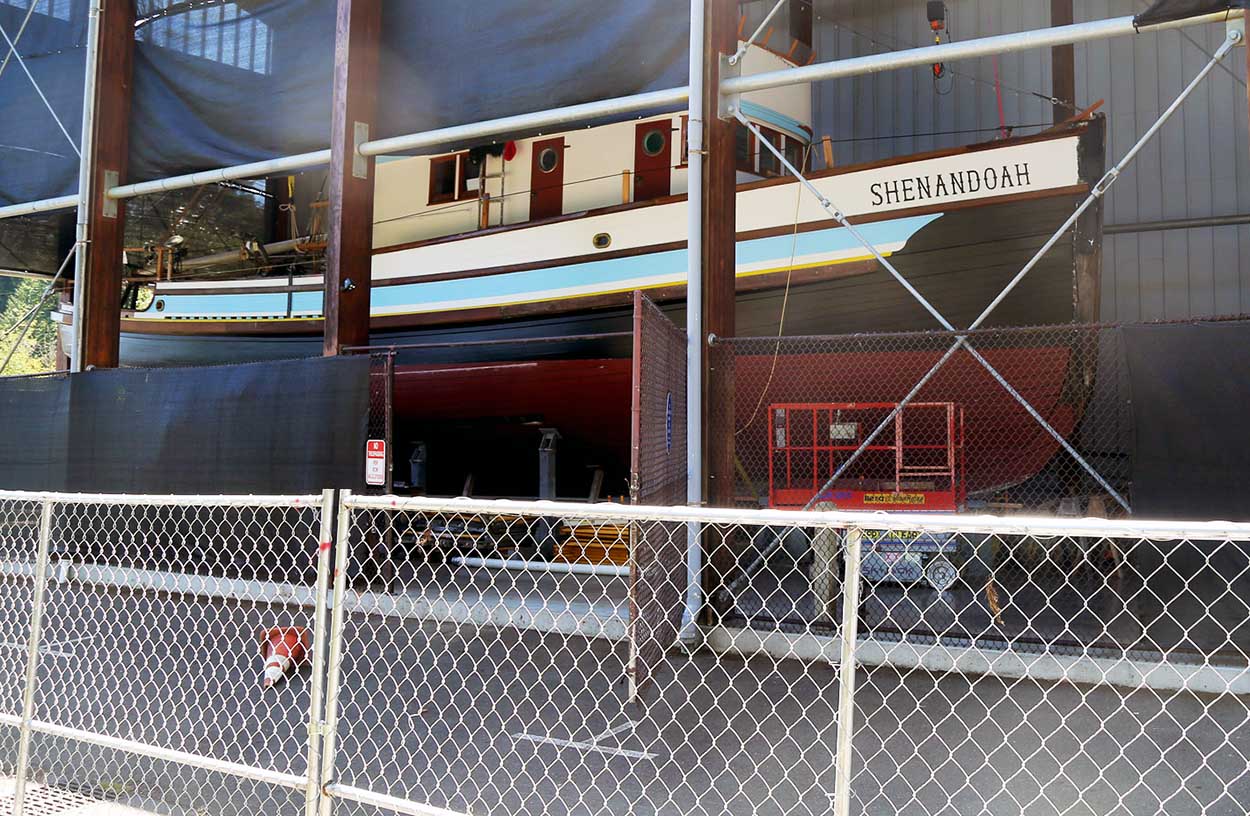
A construction fence encircles the Maritime Gallery at the Harbor History Museum. Contractors recently began work to enclose the gallery, which includes the historic fishing vessel Shenandoah.
The museum is restoring the Shenandoah — which was built at Skansie Shipyard and fished by two prominent Gig Harbor families over a 73-year career — to preserve a totem of the area’s history as a commercial fishing hub.
Museum Executive Director Stephanie Lile said major restoration work, and the museum enclosure, should be wrapped up by spring 2025. That will neatly coincide with the 100th anniversary of the Shenandoah’s launch in 1925.
Award of Excellence
Shenandoah’s Award of Excellence was one of 51 the AASLH granted this year nationwide. It recognizes the work of shipwright Riley Hall and the team of volunteers doing the painstaking work of restoring the ship.
“Their remarkable skill, vision and talent has not only made it possible for visitors to safely walk on deck,” Lile said in a statement announcing the award, “it has made the boat a work of art — a collage of old and new, salvaged and newly crafted.”
Tony Janovich donated the boat in 2000, and a team of people hauled it out of the water in 2003. It was then paraded through town and taken to a then-vacant lot near the current museum site, where preliminary preservation and restoration work began.
It’s been at its present location since 2008, before the current Harbor History Museum even opened in 2010. Volunteers and museum employees devoted thousands of hours of work to the project over the past the 20 years, and the ASLH award is a welcome recognition of their efforts.
Before Hall came on board (literally) in 2018, previous shipwrights to lead the project were Mike Vlahovich and Nate Slater.
“I do think that recognizing the work this crew put in on this project is really amazing,” Lile said.
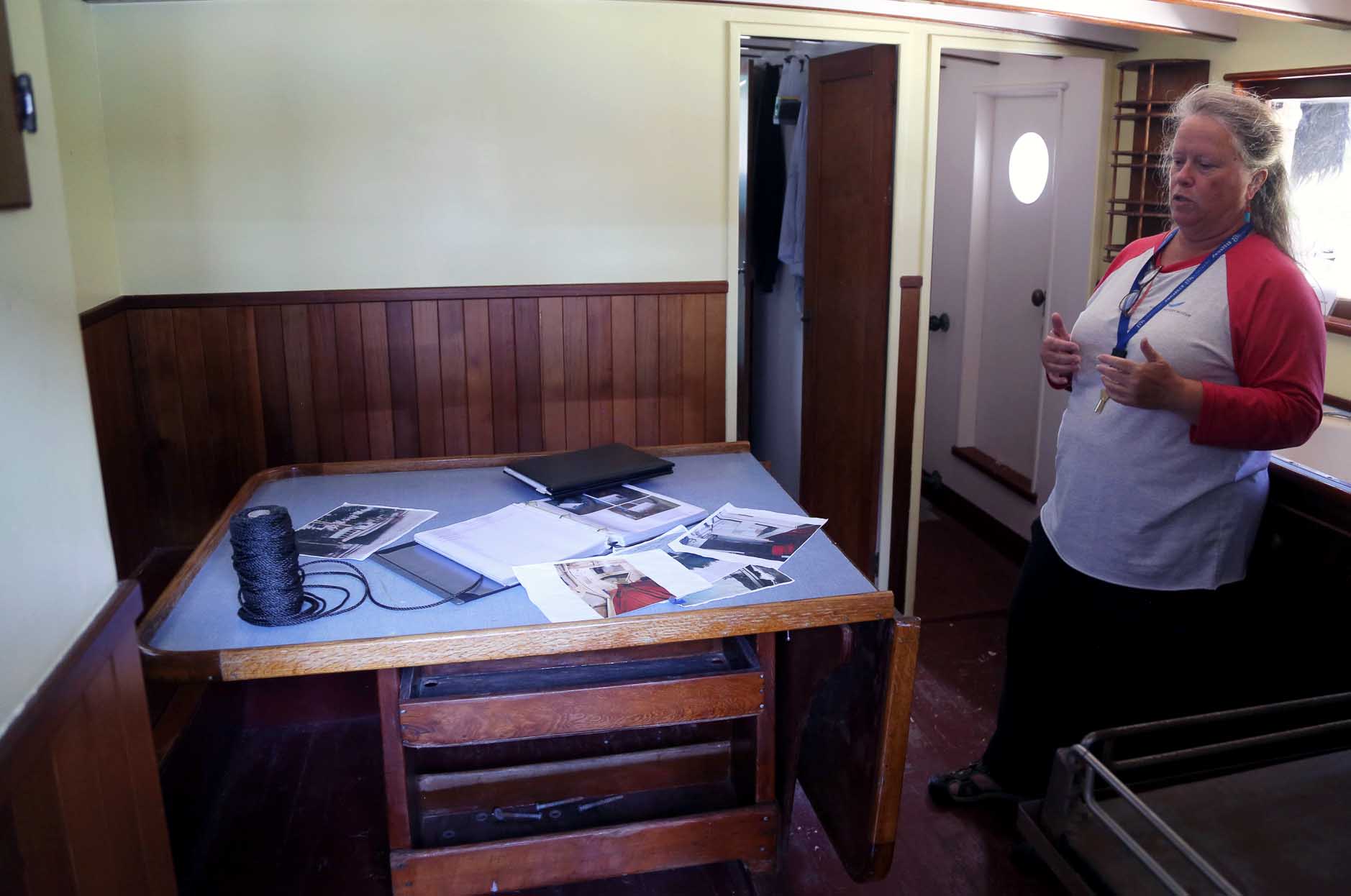
Harbor History Museum Executive Director Stephanie Lile discusses the Shenandoah project in the fishing boat’s cabin. The photos on the table provide a guide for how restoration efforts proceed.
Maritime Gallery
Enclosing the Shenandoah and its surrounding Maritime Gallery is a step toward preserving that work. Currently, the boat is in a covered but open-air work area just east of the main museum building.
That’s a treat for people walking past on the adjacent trail, and it had its advantages when performing tasks like installing an 8,500-pound, historically accurate Atlas engine in the boat. But it left Shenandoah exposed to the weather.
“I’m watching these guys work on the back deck … and it all just gets wrecked by the weather,” Lile said. “You can’t really protect the vessel the way you want to. Nor can you use the space, unless it’s enclosed.”
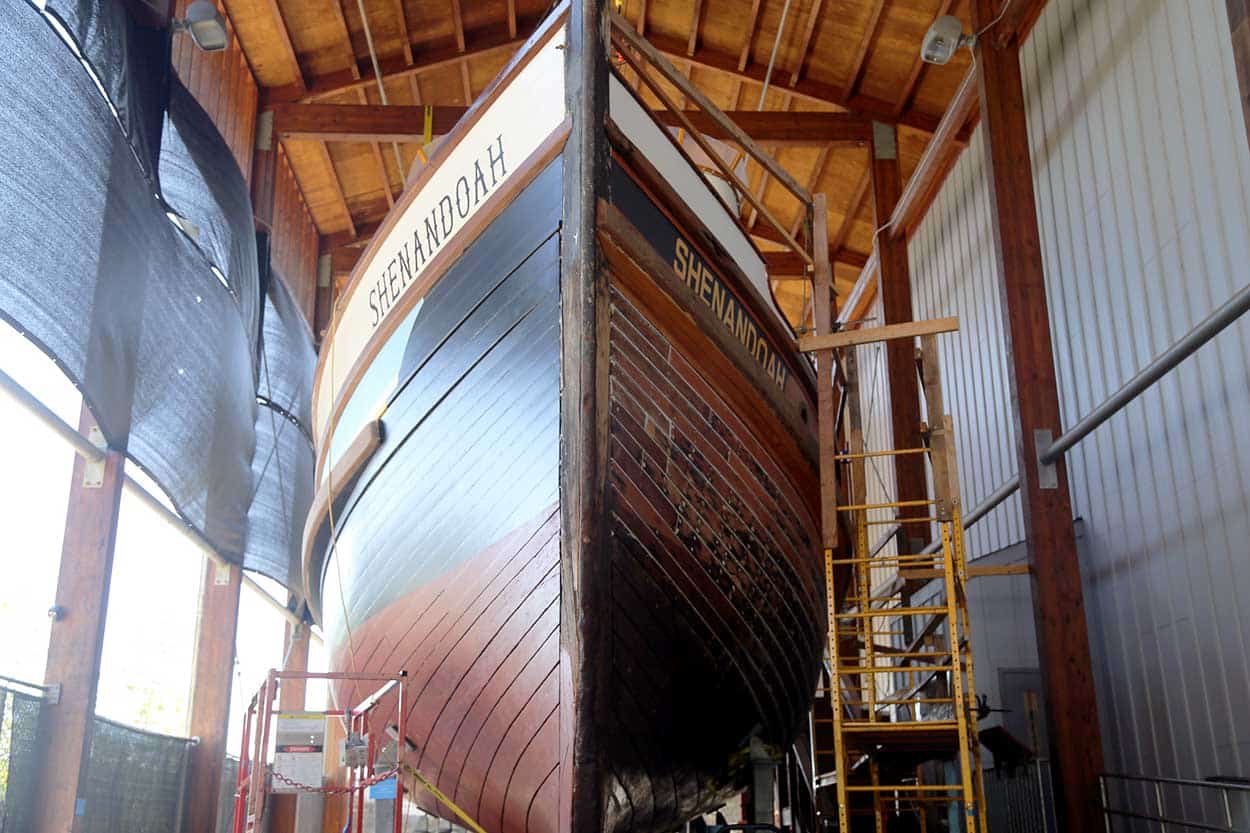
The port side of the Shenandoah will be restored to what it would have looked like at launch in 1925. The starboard side is being restored to what it would have looked like in the 1960s to the 1980s.
The history museum’s capital campaign raised about $2.8 million toward the enclosure, almost all the way to the $3 million goal. Construction started the week of July 31.
Building the exterior walls will take about four months, meaning the boat will be protected from the worst of the winter storms. Contractors will need another year to finish the project.
When the construction project and the Shenandoah restoration are complete, the fully enclosed Maritime Gallery will be open to museum visitors.
Restoration work continues
While the building goes up around them, Hall and his crew will continue their intricate efforts on the Shenandoah.
Hall, 31, grew up in Gig Harbor and graduated from Peninsula High School. He learned his trade at the International Yacht Restoration School in Newport, R.I.
He said he remembers the Shenandoah’s parade through downtown in 2003, but he didn’t closely follow the progress on the Shenandoah during his years living on the East Coast. When he moved back, his professional expertise aligned with his hometown’s passion project.
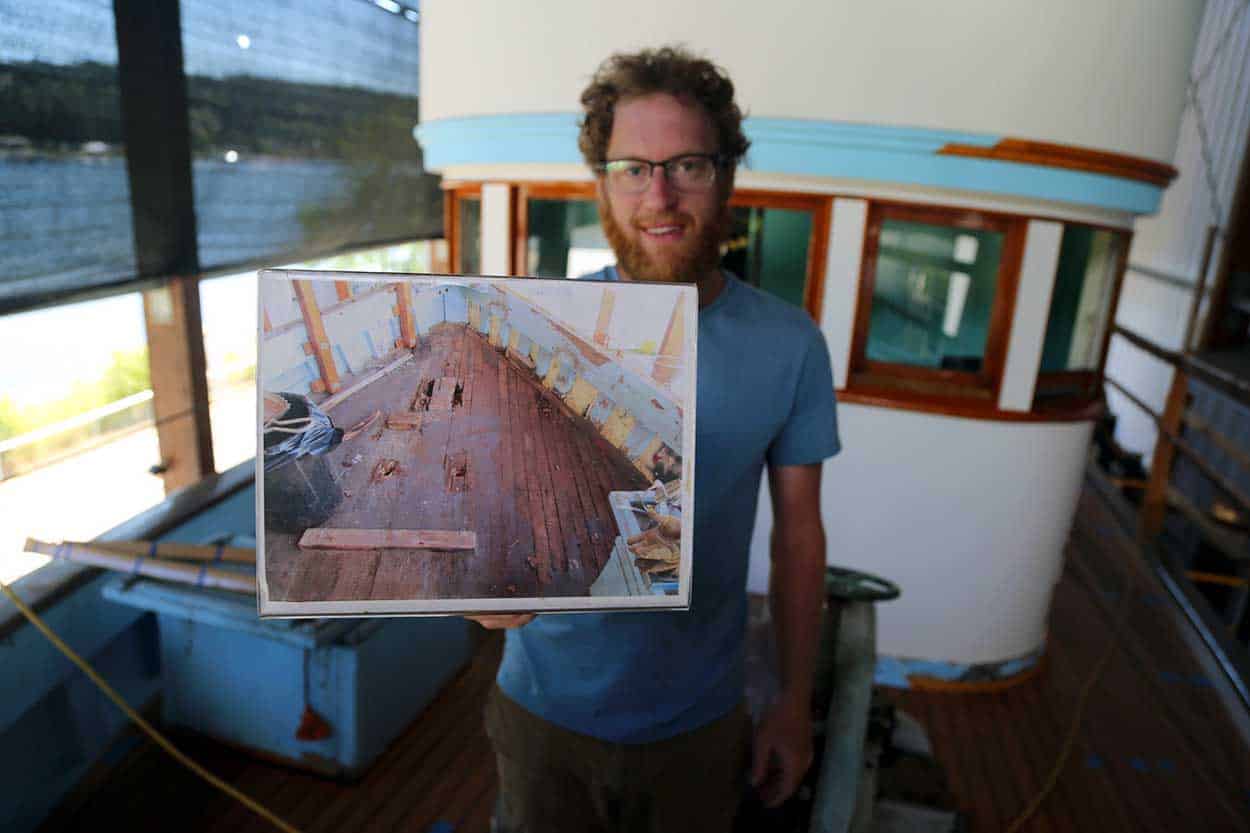
Riley Hall with a photo showing the previous condition of the deck boards on the Shenandoah.
Despite the many years of preservation work on Shenandoah, it was still in rough shape when Hall became its shipwright five years ago.
“When I started, you could literally just pick chunks off,” Hall said. “You’d try to Sawzall something, and it’d just come apart.”
Workers and volunteers toss the parts that are falling off. But they save and restore anything that can be.
“Trying to save something can be a lot more work than replacing it. But that’s the whole thing,” Hall said. “What kind of story are we telling here?”
Scavenging for the Shenandoah
Some pieces of the boat were absolutely unusable. Scavenging from contemporary vessels is an option to replace those parts.
That more than 4-ton engine came off the Norman B and is historically accurate for fishing boats in that era. Other Shenandoah peers, like the Majestic and the Avalon, also provided parts and materials.
“We’re kind of keeping all the boats alive by using different components,” Lile said.
Hall calls putting all the pieces together “a fun puzzle.”
“It’s been a great ongoing restoration piece,” he said. “But at some point, it’s just got to be done. And I think it’s going to be a huge attraction.”
Lile agrees on all counts.
“The Shenandoah was built in Gig Harbor. It was fished by two different Gig Harbor families. And it’s really iconic of the fishing boats in this area,” she said.
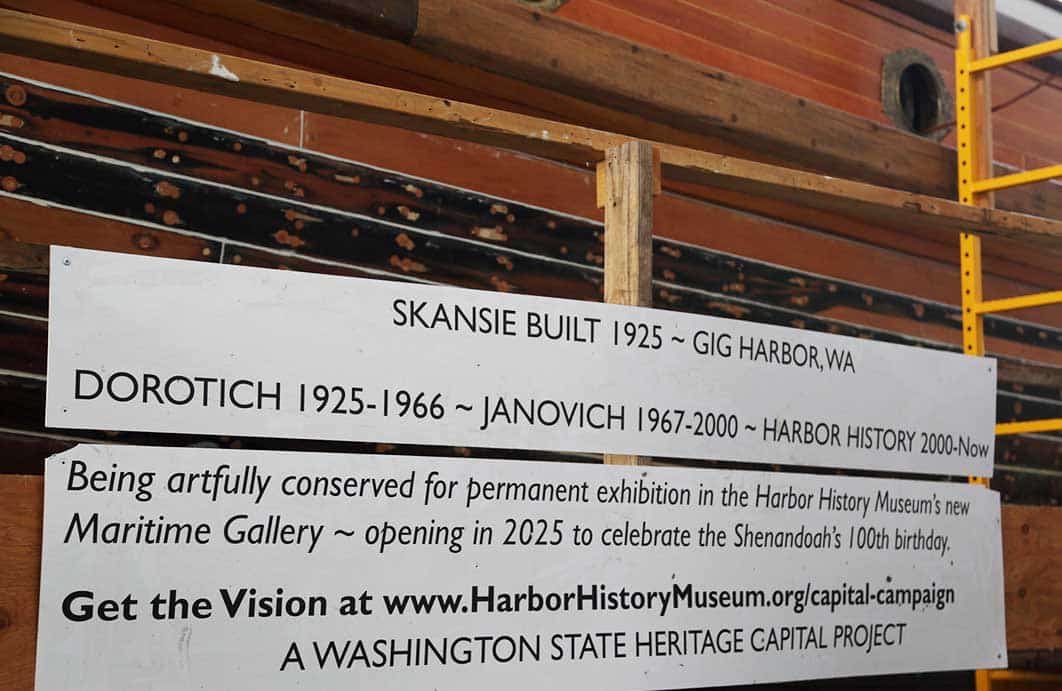
The Dorotich and Janovich families owned the Shenandoah during its working career.

